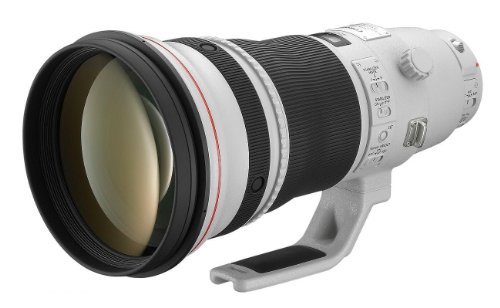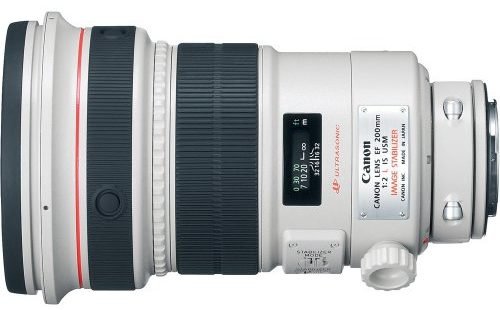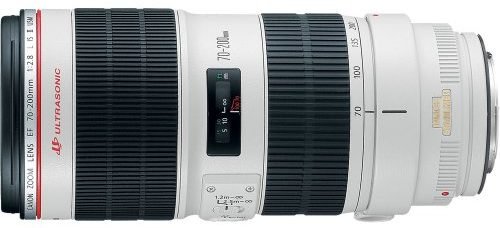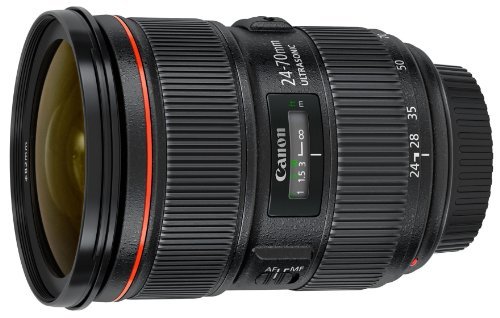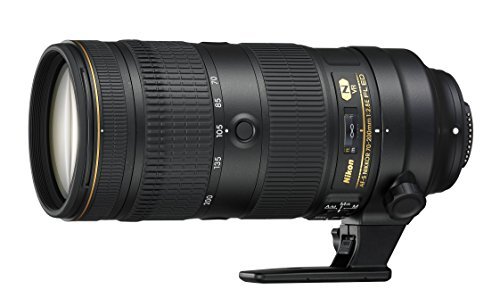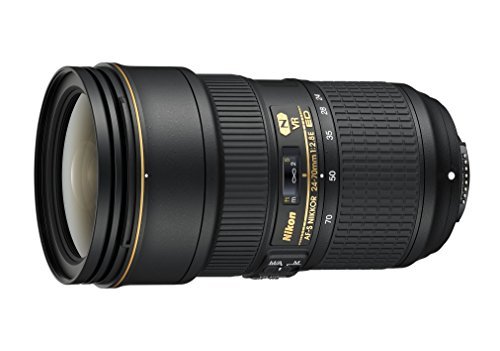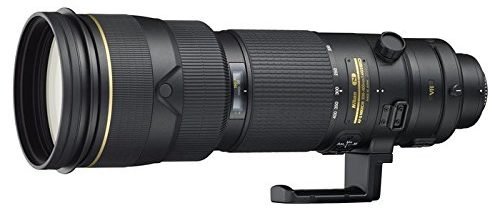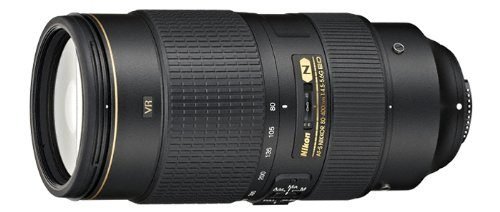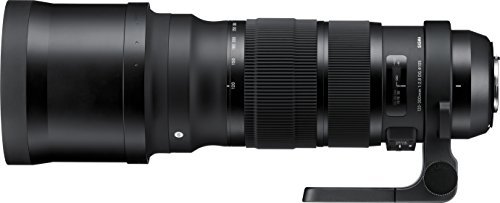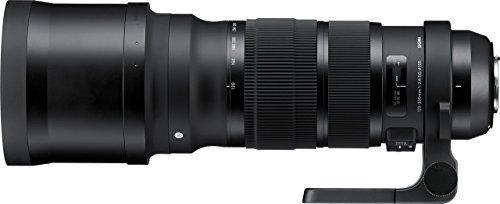Looking to capture jaw-dropping and heart-breaking moments in sports? Check out these 10 best lenses for sports photography in 2022 from Canon, Nikon & Sigma to capture the most crucial moments, that will go down in sports history.
Sports photography is the genre of photography that especially covers sports. Most of all, the majority of the cases are related to professional sports while amateur sports photography is a branch of vernacular photography.
The foremost application of professional sports photography is the purpose of editorials. Hence, dedicated sports photographers normally work for newspapers, agencies, or magazines. Also, sports photography is used to advertise, build a brand as well as promote a sport in such a way that the same cannot be done through some editorial.
When it comes to looking for equipment used for the same, normally we arrived at some predefined conclusions. Typically digital single-lens reflex DSLR cameras with interchangeable lenses ranging from 1400 to 400 mm with high continuous shooting speed. They excel in longer focal lengths which again depends on the type of sport.
While filming a sport, it is necessary to bear that proper lenses are very important as they let the photographer reach closer or farther accordingly. Also, there are some important accessories such as a monopod or tripod for an extra battery and for the sake of stability.
Typically, longer focal length lenses are used to photograph action in sports like football where Wide Angle lenses are used for sidelined and close-up athlete photos. The chosen camera bodies for modern sports photography have quick autofocus and high burst rates. This is normally 8 frames per second or even faster.
For example, the latest flagship sports cameras launched by Canon and Nikon are popular in professional sports photography. There are many other brands of camera that provide the widest range of camera lens that is suitable for sports photography.
Apart from this, there are also numerous cameras with various focal lengths and lenses which are suitable for sports photography.
Lenses that suit a specific sport can be easily obtained from different online platforms. Now different sports suit different lenses and vice versa. But on the other hand, sports photography usually requires a fast and wide aperture, and telephoto lenses that are too fast autofocus performance.
In such a case fast autofocus is needed to incline the focus on movement, telephoto to get a bit close to the action, and wide aperture.
Hence, the following presumptions are needed:
- The lens can focus quickly because of the increase in light entering the length which is important with fast-moving action.
- The background is automatically put out of focus because of a shallow depth of field which results in better subject isolation.
- Comparatively faster shutter speeds should be used in order to freeze the action which is to be captured to ensure effectiveness and efficiency in the quality.
- The widest apertures are not used much because, at this aperture, the depth of field goes really down. As a result, focusing becomes more difficult autofocus slows down.
- In the case of outdoor Sports, the distances are greater and the light is normally brighter. While in the case of indoor sports, the light remains dimmer and the distance is less.
- Outdoor sports tend to have a comparatively long focal length with a lower aperture.
- In the case of indoor sports, the lens is short and the aperture is faster.
Mostly zoom and Prime lenses are used as they generally allow a greater range of framing. Primes are faster, cheaper, lighter, and optically superior. But they are restricted in framing purposes. For instance, the Nikon camera lens is a fixed telephoto lens that cannot zoom under any condition.
The aperture of f/2.8 faster is mostly used although even f/4 is not easily found, particularly on the brighter days.
Whether you shoot with a DSLR or any other mirrorless camera you should always be clear about the camera you need as per your requirement. Especially in the case of sports photography. Here, you can have a glance at the best lens that can be used for the purpose of sports photography.
Now let’s have a look at a comparison table of some of the best lenses for sports photography from Canon, Nikon & Sigma.
10 Best Lens for Sports Photography
Best Canon Lens for Sports Photography
1. Canon EF 400 mm f/2.8L IS II USM Lens
This lens is definitely one of the best lenses of its kind that you can buy. It is available in almost any focal range length. It is a bearing for a favor super-telephoto focal length.
With a bright 2.8 maximum aperture 400 mm II USM is a Canon L- series optic well suited for outdoor, wildlife, and sports applications. You can also consider it as the utmost choice for an indoor sports action lens It may sound a bit contradictory at the same time but the focal length should be adjusted in such a way that the capture reveals the best shot.
It is advised to keep the focal length and aperture in the perfect position.
Now, if we look at the overview of this lens we can conclude easily that this is just the thing you should go for.
The brand has really improved a lot with this utmost celebrated lens in the latest model of Canon AI which is not that profoundly celebrated feature but it did. The professional and advanced amateur like the latest features it has been loaded with. That provides the best image quality within the specified aperture and focal length asset according to the requirements.
The latest features of this lens include 1 fluoride and 5 Uri element for increased and improved optical quality. In such a situation the chromatic aberration is reduced and the overall image clarity improves in the meanwhile.
Due to this, the lens has a minimum focusing distance at all the entire zoom settings. The lens features an extravagant and next-generation stabilizer that stabilizes the optical image. This improves the pixels up to 3.5 stops of correction at various specified focal lengths.
The features also include L- series lenses, dust, and moisture resistance that are designed for use in the most challenging environment. This is the typical category of rigorous professional use.
- The lens is highly durable and easy to maintain.
- The lens provides a higher resolution.
- The respective lens is suitable for challenging situations.
- May cause an optical error at certain points.
- Less exposure.
2. Canon 200mm F/2L IS Telephoto Lens
It is an exceptionally fast medium-telephoto prime lens. The most special thing about this lens is that it is the most ideal choice you can make for portraiture as well as indoor sports.
Whether shooting is on highlight or low light foreign fast motion application. When it comes to its size, it is a big lens larger and even heavier than anything else you can have in your kit. It is only slightly larger than Canon 70-200 but the front lens element provides the girth that at first, seems a bit intimidating.
It is used for short periods of time and is absolutely hand foldable with great image stabilization. One thing that is suggested to the user is that you should balance it with a properly weighted camera. Most probably, the one without a group and added weight hand grip work with a welcome counterbalance.
While the lens will perfectly fit in most backpacks, it is surely going to take more than its fair share of space.
Especially, if you have the much-needed lens hood reversed and the cover on it. Personally, it cannot be justified if it’s brought with a leather cover along on assignment. But on the other hand, that also meant letting the front larger lens element be exposed in the bag.
Now if we talk about its features image stabilization is one of the prominent features of this lens Stabilization has two modes, the first is for shaky hands and the second one is for mastered sports cars toddlers, or whatever you have.
There is a focus reset button that enables you to set a specific focusing distance and then return to it at any decided time. This has a very hidden well-hidden playback which is a group metal ring between the front rubber grip and the focus ring. Also, different rubber grip has four equally distributed buttons that are AF stop buttons.
These temporarily pause autofocus which is not an issue for most people. Another factor to be considered is that the lens doesn’t make screw filters for the range of telephoto. The lens is a fully weathered shield which is a must-have on any L series lens but Canon doesn’t always agree with this.
A massive lens hood is also included along with a leather cap for protection during transport.
- Short and wide open
- Image stabilization
- Bragging rights
- Need for new filters
- May be expensive for beginners
- Weight
3. Canon EF 70-200mm f/2.8L USM lens
The USM is a workhorse telephoto zoom lens specially designed for professional uses. It has a tough durable design and a 4-stop image stabilizer and specialized lens elements. The L series in the Canon is a prominent professional range of length lenses representing the best in Precision design optics.
L series lenses amalgamate superior performance with Ultra relative handling. It is also resistant to dust and moisture. It has fast and constant maximum pressure handheld in low light conditions which depends on the fast maximum aperture.
I shoot handheld in low light conditions at maximum aperture, it stays constant throughout the zoom range.
Such an aperture also emits photographic access over the field. It is also an image stabilizer. The four-stop image stabilizer makes the EF 70-200 f/2.8 IS USM ideal for shooting in low light conditions when using a tripod is not an easy task. The start needs to be a bit closer to the object which ensures the stability of focus.
One should always be careful regarding the focal length of the lens as it decides the image quality of the shot. Fluorite and ultra-low dispersion lens elements. Five UD elements are used to ensure natural color reproduction and high contrast throughout the zoom range.
The lens is well-loaded with a perfect range of optics that are reasonably well in improving pixel quality. Another distinct feature of this lens is that it has the feature of a smooth background blur. This is a virtually circular aperture diaphragm that gives out-of-focus regions a softer and more uniform feel.
Normally, sharp and foreground objects stand out a lot against a smooth blurred background. This is a case-sensitive option and here optics are needed to be clear.
The lens also features an ultra-focusing advantage over another lens. It is a ring-type ultrasonic motor that drives autofocus extremely well and is quick in silence.
The excellent holding torque ensures the point of focus is reached accurately too without overshooting. Further, the full-time manual override is also available. This makes it possible to adjust the focus without leaving AF mode.
When we talk about its accessories, the lens is supplied as standard with the ET-87 lens hood to prevent glare from affecting images as well as a removable tripod mount and also a soft case.
- High-performance zoom lens
- Constant maximum aperture
- Improved durability
- Ring-type USM AF motor
- Four-stop image stabilizer
- Nothing worth mentioning
4. Canon EF 24-70mm f/2.8L II USM Lens
The Canon EF 24-70mm lens is a family of professional EF mount wide to normal zoom lenses manufactured and sold by Canon. The first of the family the EF 24-70mm f/2.8L was introduced in 2002 to replace the well regarded 28-70 mm was introduced in 2002 to replace well-regarded 28-70mm f/2 .8 L.
Two later versions have been announced in the year 2012. The first of these, the EF 24-70mm f/2.8L II was announced by the company in February but would not ship to customers until September of the same year. This lens replaced the MK and had an MSRP at the highest rate.
This became available in January 2014. The f/4 version, which is the first of the range to have included image stabilization, was initially reported to be the standard kit lens for the Canon EOS 6D, kits in most of the markets until late 2014, and the 5D Mark IV kit in 2016.
Just like the previous model, this lens was often considered to have the best contrast decent sharpness wide open and color rendition. Although, some samples of this lens have also been reported to be deficient in some operational categories which were not present in the older version. One of the key features of this lens is Reverse zoom.
Recent reports on this lens have witnessed some significant improvement in its application of optical quality. The above-mentioned rental association stated that all versions of the lens include the barrel against dust and water. They are not waterproof. The diaphragm of the lens remains nearly circular according to the Canon press release from 2000.
Although, certain characteristic of Zoom lenses exhibits some distortion at the shortest focal length of this lens.
At the telephoto end, the lens is the most retracted one that provides the most precise protection from the lens hood. The powerful lens has a more conventional design that extends as much as the focal length increases.
It also shares the same conventional design. This lens is also available in version one class lens and the other is a consumer-level lens similar but has a slightly longer focal length.
The L version has a maximum aperture of F4 and image stabilization which is similar to the previous model but it lacks that lens macro feature. In this regard, the consumer version is also image-stabilized but it replaces the USI motor drive and has a variable maximum aperture which is also like a macro feature.
- Best focal length
- Superior quality
- May lack accuracy in dim light
Best Nikon Lens for Sports Photography
1. Nikon AF-S NIKKOR 70-200mm f/2.8E FL ED VR Lens
When it comes to professional optical excellence and an all-rounded personality, this model by Nikon is just a choice you should go for.
Due to its lightweight design ranging from advanced NIKKOR optics in Magnesium, it allows for fragile shooting in diversification. Be it sports, wildlife, portraits, fashion, or any other everyday subjects. Made up of Creative control it carries a groundbreaking vibration reduction system that provides an effect equivalent to the shutter speed of 4.0.
It is faster in normal mode. Meet up with a maximum aperture of f / 2.8 throughout its entire focal range. It has an enhanced tracking performance. This extraordinary fast telephoto zoom lens is just the choice for professional photographers and enthusiasts.
It is known to capture breathtaking images that actually stand out in the crowd of images. Capturing videos and phenomenal stills in standing high resolution is the best choice available.
The fluoride lens element of this lens gives excellent imagery with some superb chromatic correction performance. High refractive index lens elements effectively correct the curvature of the field and spherical abbreviation for stunning clarity.
Extra-low dispersion glass elements of this lens make sure that the contrast and color and rendering stand out perfectly. Lens also works the nanocrystal to minimize the flare effects for unsuppressed image quality. This one is engineered for stability and is designed for movement.
The vibration reduction delivers a shutter speed equivalent to the highest level. Its vibration reduction also provides a stable viewfinder image even when randomly moving objects are being tracked during high-speed continuous shooting. This is especially effective when sporting events are being shot.
You can never miss a moment with this lens. It comes with an improved autofocus tracking performance along with an implemented electromagnetic diaphragm mechanism.
It enables you to achieve effective subject tracking and greater auto exposure control with is even during high-speed continuous shooting. This remarkable lens brings you closer to your subject with absolute focus and precision with a minimum focusing distance of 1.1 m.
Although this lens is not just about getting closer. With a focal length of 1 to 200 mm and a maximum reproduction ratio of 0.21 x shooting magnificent close-up shots of the smallest subjects is a pleasure.
This lens offers unmatchable agility you can always rely on. It weighs approximately 110 g lighter than the previous NIKKOR model.
- Comes with sealed movable parts that provide anti-dust capabilities.
- Ensures easy maintenance and reinforces durability.
- It May create durability issues
- Customary features
2. Nikon AF-S NIKKOR 24-70mm f/2.8E ED VR Lens
This lens maximizes the capabilities of your FX-format DSLR. No matter, whether you are a commercial shutterbug, a photojournalist, A Portrait artist, A wedding photographer, or something else.
This 2.9 X normal zoom lens focal length range of 200- 70 mm is indispensable as far as its features are concerned. It offers the versatility of shooting in a staggering range of scenarios. The maximum aperture of 2.8 can be leveraged to achieve some remarkable details along with dramatically sharp images at any focal length.
It is a revolution in optical technology. This is the first NIKKOR lens to feature an extra-low dispersion glass element that effectively corrects lateral chromatic aberration. It also incorporates aspherical lens elements with high refractive index lens elements and nanocrystal code.
This minimizes posting effects and chromatic aberration.
The path-breaking qualities ultimately deliver the best images with stunning sharpness and vivid clarity. It gives pinpoint precision in every frame. It compensates for slow and panning movements with the best VR Technology that provide a shutter speed of 4.0 that stops faster in NORMAL mode.
The lens also features an active mode that stabilizes the viewfinder and image. It also minimizes blurring in captured images even when shot from a moving vehicle or some unstable position. But with this lens, crisp and sharp images can be achieved with every click.
It has agility beyond any other comparison. It is used for smoother faster and better autofocus. It comes with a silent weight motor that leverages rotational energy to incline the focus on optics. The dynamic IA speed is optimized for capturing Sporting events of fast-moving objects and animals or something.
This is also equipped with a diagram mechanism that is electromagnetic auto-exposure control. This convinces the user to achieve images of extraordinary quality even during high-speed continuous shooting.
This is one lens you can Always Count On. It enhances your photography experience even in the most difficult situations. Its body is crafted for superior durability so that it can be capable of withstanding shocks and rigid temperature changes.
The lens barrel has also been specially designed for better clenching and control. This revolutionary lens is further guided with a fluorine coat that can repair dust, grease, and water droplets, and clear maintenance so that you can easily capture your creative vision. No matter, where you are and what the angle is.
- Superior durability
- Best agility
- Requires a lot of space to store
- Not much handy
3. Nikon AF-S NIKKOR 200-400mm f/4G ED VR II Lens
Nikon AF-S Nikkor 20-400mm f/4G ED VR II Lens is one of the best lenses for sports photography that you can buy. Nikon calls this model a silent wave that is levied on the Focus motor. It is widely used for vibration reduction. It is valid for cost reduction and removing compatibility with older cameras.
The main focus is on internal focusing. Now if we talk about its objects there are 24 elements in 17 groups four of which are ED and this does not include the additional front protective element. The first model was a manual focus and people didn’t buy it because it was a silly focal length range, big, and also very expensive at that time.
Nikon introduced this lens, heavy and expensive and doesn’t get compared to other similar fixed lenses. Way back in 2003-2010, Nikon introduced this new model with the popularity of Digital Photography and the world economy which is continuing to create more affordable models at economical prices.
It adds a couple of minor features like a better VR system and is otherwise likely to be the same. When it comes to the focus buttons there are 4 around the front side. Although, they do the same thing you will always end up having it handy, no matter how you hold it. Also, there is a selector switch that controls the movement of these two.
The A-FL position duplicates these buttons and moves on older lenses. This is to lock focus while they are held. Normally, this is used when the subject runs behind something and the camera is not required to change its focus while the subject is being hidden.
The memory record position tracks the lens to the focus distance remember when you press the memory set button. This is a glance at the little details on the manual focus super telephoto image.
Also, this is very handy especially when you want to focus on a set. which is not in motion and stable at its place. The memory recall feature works even when the lens is set on manual focus which most people prefer on their part.
The speed is faster than you can expect if you haven’t used any such professional lens by Nikon.
- Memory recall feature
- Great manual focus
- Visible levels of distortion are needed to be corrected on every single level
- Zoom and focus controls may fail sometimes
4. Nikon AF-S NIKKOR 80-400mm f/4.5-5.6G ED VR Lens
This is versatile, compact & lightweight, and is ideal for wildlife and sports photography. It includes VR image stabilization technology.
Recently, a newer G version had a versatile zoom. This can’t match the new lens for better optical quality but can be found for return in bargain prices. That is the type of zoom lens with a focal length of 80 to 400 mm. Its image stabilization is brilliant and there is a vibration reduction of 3 stops.
This lens is without a tripod collar with a close focus on the space utilized. The biggest source of support for the free is when it is used to review the best lens. This new lens adds up instant manual focus override and closer and also fast focusing original lens reviewed many other sites and blogs.
The lens works great on FX and the lighter and much less expensive does everything as well as better but only goes when the optical focal length goes down to a certain level.
The lens is a kind of miracle. Not only this, but the VR feature actually works and allows you to shoot this long lens handheld in all sorts of light. It weighs less than the last model by Nicole and due to this and is a great optical lens and freedom from chasing VR.
Except for this real feature, this lens is in all sorts of light. As the experience recalls, it is well made but has a lot of distortion and you may leave blank how sharp it is.
- Has a tripod collar
- Manual focus
- May lose optical fiber on rubbing too harshly
Best Sigma Lens for Sports Photography
1. Sigma 120 – 300 mm f/2.8 DG OS HSM “ Sports” Lens for Canon
The Sigma 120- 300 mm sports lens is one of the most physically beautiful lenses that is committed to delivering the most beautiful images in HD quality even when the open aperture is wide enough. On the other hand, this lens has the widest aperture.
This is available in any lens of 300 mm zoom but it somehow offers the most significant 120-350 which is heavy, but it still stands well built solidly. It has a nicely implemented OS system that is heavy and holds images but this is not an expensive lens.
This is not extensive but it’s comparatively a great deal as compared to the glass model by Canon and its super-telephoto lens.
In case you need a lens with a 2.8 aperture along with a zoom lens longer than 200mm, this is the only option available to you. The Sigma sports lens and its predecessor are emerging models that are currently available in the market.
If you get to know the difference between the lens and the previous you will borrow some of the similarities after the experience. People usually have new length testing procedures before using it for real and practical application but Sigma arrived just before the movement can be captured.
A 2.8 maximum aperture combined with a telephoto focal length can be easily used for sports and other low-light actions. The zoom range adds a greater dimension to the fixed length. In-camera reviewing sessions during the program conducted by various authorities concluded that the 120-300 OS was performing really well.
Long focal length lenses can create a great background and grade separation of the object from the background. Soon as it gets in a zoom lens aperture begins to stop action especially when the light is low. The telephoto focal length means that sports are a primary target for the above lens.
Mostly you can get heavier using this lens mounting on a monopod while shooting the events supports can limit event and portrait shooting flexibility.
The dynamic view mode offers an OS effect on the image in the viewfinder. There are other settings that are well-balanced and suitable for various types of scenes.
- The OS effect mode is one of the best features of this lens.
- Proves to be miraculous for capturing the scenic composition.
- Appreciable focal length.
- It requires a shorter shutter speed even in low light.
- Adjustments sometimes tend to be problematic.
- Least flexibility.
2. Sigma 120-300mm f/2.8 DG OS HSM “Sports” Lens for Nikon
It is a high-end super-telephoto lens that has a versatile zoom range with a wide constant aperture of f/2.8. It is specially designed for wildlife, sports, and portrait photographers.
This is a very interesting lens not just because of its flexible range that can be easily found in any other brand in the market. But also because of its major constant aperture. To date, no other company has produced a comparable length lens.
Nikon has a 200- 400 mm constant aperture super zoom in it the arena while Canon offers a 200-400 mm lens at a much lower price and heavier price.
Both give the same benefits but one thing that draws a line between them is the adaptability and the feature of a superzoom.
Once you compare them to Sigma which becomes a teleconverter, you can easily get to know why it becomes such an auspicious offer. Especially with its current market price which is around 3600 dollars. One of the key features of this lens is that it has a large aperture with a great zoom range.
The best part is that it includes technologies such as HSM and OS. Its main accessories include a lens Hood and carrying case. If you are a Nikon Shooter you definitely need to know that the focus and zoom ring towards the back. They are configured to rotate in opposite directions to Nikon super-telephoto lenses.
Now, this may sound a little bit working but for a professional that is used to the Nikon, it can create a problem. It can be understood that even a mild annoyance during the shoot can interrupt the whole setting.
One great thing is that the focus overrides the feature of this modern lens trekking the focus ring while shooting is being carried out. Also, you need to be clear with your autofocus lens that is inserted towards the background of the lens. One of the key features of this lens is that it is easy to with its auto-focused twitching system.
This can also be reflected back on the recommendations that are available online for this and other similar lenses too. If you look at various other reviews, you will get to know how wonderful it is to witness such a ready-to-go lens.
This is an absolute treat you should definitely go for if you too are a photographer or pertains to the same industry in one or the same way.
- Has a versatile zoom range
- Has constant superzoom
- Has a wide constant aperture
- Difficult to handle or carry for longer
Buyer’s guide for the best lens for sports photography
So these were the Top 10 lenses by Canon and Nikon that can be used for the purpose of capturing moments. Especially, if your focus is sports photography then you can definitely go for the aforementioned categories of the lens. One thing that you need to know here is that you should have a clear idea of what your requirements are.
Especially, if you are about to purchase a new lens and looking for the one that is suitable for you and your requirements. Then you should definitely go through the recommendations on the list.
When it comes to sports photography, you really have a lot of options at your convenience. Ranging from the cheapest to the most quality lens. Just mark what you need and possess to purchase your lens accordingly.
Pick the right lens
Foremost it is necessary to pick the right Lens. We would like to suggest that you shouldn’t pick any lens randomly. Instead, it is essential to cross-check all details before making your decision of buying the best lens for sports photography.
Moreover, try to specify the lens which is quick in capturing images in comparison to other lenses.
Accurate shutter speed
It is important to understand that shutter speed matters a lot in sports photography. So, always prefer to make the selection of lenses which is having an accurate shutter speed. In order to provide you with the incredible experience of sports photography.
Increased Zoom power
Believe it or not, increased zoom power is mandatory for taking into consideration striking sports photography. Apart from that, a line with the increased zoom capacity ends up capturing app details far more clearly.
Resolution is the key
Yes, you need to raise your faith in this fact. Resolution is the actual key to impactful sports photography. This is the reason why we would like to suggest you that pay for the lens which is worth buying. Never forget to make an inspection on the resolution of the lens.
Conclusion
Hopefully, this guide helped you to tackle your confusion as to what to prefer. The guidelines and information shared here can be really productive if referred to properly. However, it is always advisable to personally go through the product.
But sometimes, going through the reviews can prove to be of great aid. If you are looking for the best lens for sports photography, the above-mentioned lenses are the ones for you to grab.
